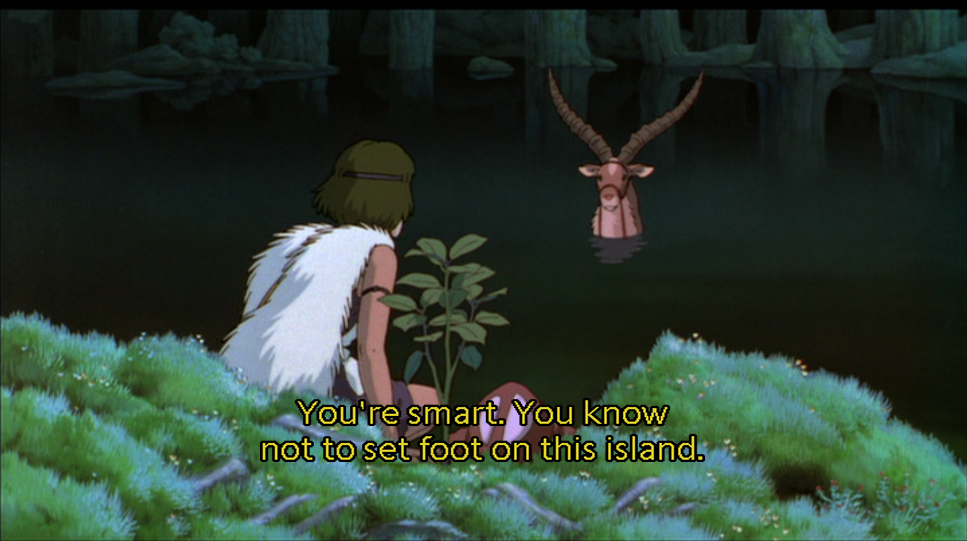Movie Review: Princess Mononoke (1997) directed by Hayao Miyazaki
When Prince Ashitaka’s remote village is attacked by an accursed boar monster, he is forced to slay the creature. But this passes the curse along to him in the form of scarring on his right arm that gives him superhuman strength, but sometimes takes control of the arm. Worse, the curse will spread both over his body and inward, eventually killing him. A curious iron ball found in the boar’s body provides a clue; perhaps if Ashitaka can find the origin of the curse in the west, he can also find its cure if he can see with unclouded eyes. So he mounts up his faithful red elk Yakul and rides off, little guessing that he will become involved with the battle between Lady Eboshi’s ironworks and the beasts of the Deer God’s Forest, plus San, the Princess Mononoke!

This animated fantasy film was originally planned to be the last by famed director Hayao Miyazaki at his Studio Ghibli production company. It circles back round to some of the themes of his science fiction epic Nausicaa of the Valley of the Wind: respect for the environment, the foolish destructiveness of war, greed and the cycle of vengeance spread poison; and goes with a somewhat darker take. This is the least family-friendly of Miyazaki’s films.
On the side of Nature is San, a girl literally thrown to the wolves by her fearful parents to secure their escape, then raised by those same wolves. The humans call her “Mononoke-hime”, Princess of the Monsters. She’s not truly a beast, but nor can she stand the humans who have attacked her home and harmed her people. San’s a warrior who prefers to take direct action and has never learned about compromise.
Lady Eboshi is actually a pretty nice person as industrialists go. She cares for the welfare of her workers, has gone out of her way to employ people that ordinarily would not be able to earn an honest living, like former prostitutes and lepers, and faces up to the negative consequences of her actions. On the other hand, she uses ecologically destructive methods to mine iron ore, and would just as soon kill off all gods and spirits that hog the land her people could use. Plus, she’s under pressure from less compassionate lords that would like her foundry for themselves, and giving the Mikado a huge present like the head of the Deer God would put him in her debt. She’s not going to let San stand in her way.
So it’s up to Ashitaka, who knows the benefits of civilization but still respects the ways of nature, to try to find some middle ground between them so that mutual destruction does not result. His curse both helps and hinders him in this effort; he’s strong, but by no means invulnerable. There’s also more moving pieces to the puzzle than he can influence at any one time.
As expected from a Ghibli film, the art is gorgeous, and the music by Joe Hisashi superb. The movie is also helped by the relatively rare “no cuts” contract Miyazaki insisted on for the North American release, having learned a bitter lesson from Warriors of the Wind.* Everything Miyazaki wanted you to see is up there on the screen.
Content note: This has much more bloody violence than other Ghibli films, including hands and heads flying off, and many talking animal deaths. Several women have exposed cleavage, and, consistent with the fashions of the time, we often see men’s loincloths. Older teens should be okay, but parents of younger or sensitive viewers might want to prescreen the movie to see if it’s right for their children.
Overall, one of the best animated films of recorded time, well worth seeing when you’re ready.
* Not to knock Warriors of the Wind, which was a fun film and directly involved in my becoming an anime fan. It’s just not at all the same movie as Nausicaa of the Valley of the Wind. Also, the VHS cover was terrible.

